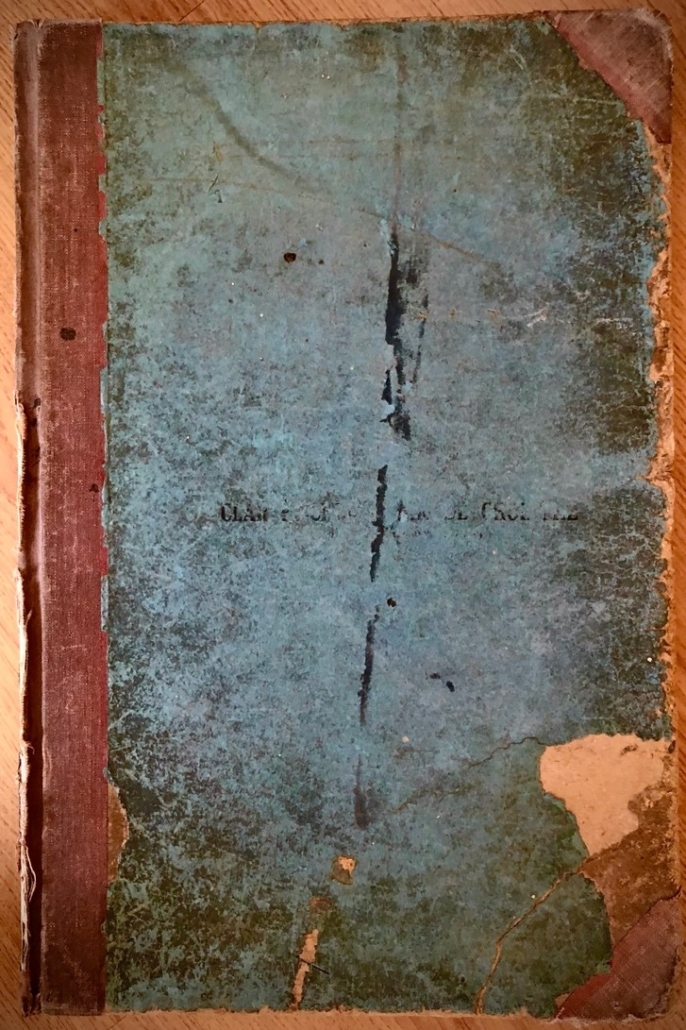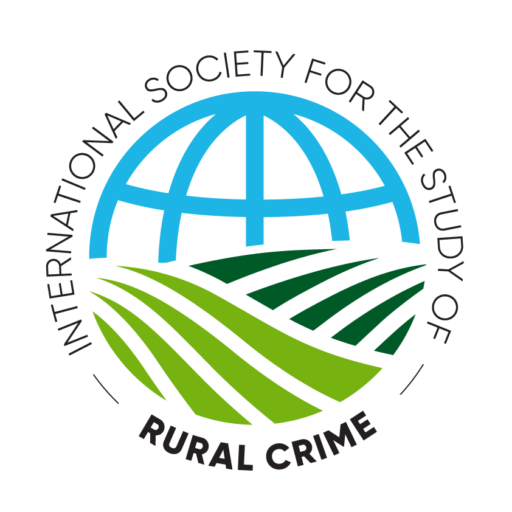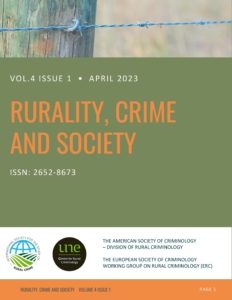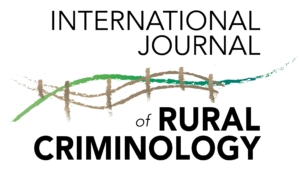New Research! Rural Crimes Committed in 1940’s Ireland
Written by Dr Clay Darcy, Technological University Dublin, Ireland.
A recent research article by Clay Darcy, PhD, published in the International Journal of Rural Criminology (Vol. 8, Issue 1) examines a volume of recorded crimes compiled by Irish Police (Gardaí) during the early 1940’s in three small rural villages on the East coast of Ireland. The volume is being analysed as part of an ongoing sociological research project into historical rural crime in Ireland.

Front Cover of the Volume of Crimes
This article focuses on crimes committed between 1941 and 1943. Darcy uncovers records of various types of crime within the volume, including; indecent assaults, concealment of births, attempted suicide, sacrilege and larceny, among others.
The article provides a historical backdrop to the research, describing what rural Ireland was like in the 1940’s. It was a period known as the ‘State of Emergency’ in Ireland. World War II raged in Europe and Ireland had adopted a stance of neutrality. At this time Ireland was still a relatively new independent State with no means of defence and Irish society was heavily influenced by the Roman Catholic Church. It was a time when crime and sin were deeply intertwined.
The article also describes the formation of the Irish Police Force: An Garda Síochána, and highlights how this police force was comprised of physically large young men. The majority from agricultural backgrounds, who had low levels of educational attainment and were predominantly Catholic. Darcy argues that at this time, the Gardaí were not only agents of the state, enforcing its laws, but they were also moral watchdogs, enforcing a version of social order that was in keeping with the religious teachings of the Roman Catholic Church.
The article presents both quantitative and qualitative data. The quantitative findings include tables detailing the type and number of crimes committed in these small villages between 1941 and 1943 and details relating to ‘culprits’ and ‘injured persons’. Interestingly, 31 out of the 83 culprits (37%) for the period under examination were children under the age of 18 years.
The qualitative aspect of the article examines four categories of crimes: concealment of birth; larceny; attempted suicide; and, indecent assault. The article also examines and discusses the authors of the volume: the Gardaí. Focusing in particular on their investigating and interrogation practices.
The contribution of the article lies in how it provides a vignette into rural crime and of the lives of those living in these small rural villages in Ireland during the 1940s. Darcy argues that crime and sin were deeply interwoven at this time and that morality featured heavily in the policing habitus of the Gardaí.
Much of the crime featured in the volume related to poverty and the austerity of social life during a national state of emergency. This article might appeal to those interested in historical rural crime, morality and crime, Irish policing history.

 The use of image and performance enhancing drugs (IPEDs) is a growing issue, with users seeking to enhance their physical appearance and athletic performance. While much research has been done on IPED use, little attention has been paid to how rurality shapes IPED use and access to harm reduction services. This is a critical gap, as rural populations face unique challenges in accessing health services, and their experiences may differ from those living in urban areas.
The use of image and performance enhancing drugs (IPEDs) is a growing issue, with users seeking to enhance their physical appearance and athletic performance. While much research has been done on IPED use, little attention has been paid to how rurality shapes IPED use and access to harm reduction services. This is a critical gap, as rural populations face unique challenges in accessing health services, and their experiences may differ from those living in urban areas. Steroid users in rural areas faced greater concerns over the personal impacts of being identified as a user on employment prospects. Additionally, the impact of small-town surveillance and stigma exacerbated the issue. As such, one key finding was the importance of anonymity to steroid users. Rural gym users, in particular, expressed the need to access injecting equipment and advice without being identified by neighbours and friends, which is made difficult by small-town contexts. There was also a need to seek health advice and monitoring without risking this being permanently recorded on medical records, in a way that could harm future employment prospects.
Steroid users in rural areas faced greater concerns over the personal impacts of being identified as a user on employment prospects. Additionally, the impact of small-town surveillance and stigma exacerbated the issue. As such, one key finding was the importance of anonymity to steroid users. Rural gym users, in particular, expressed the need to access injecting equipment and advice without being identified by neighbours and friends, which is made difficult by small-town contexts. There was also a need to seek health advice and monitoring without risking this being permanently recorded on medical records, in a way that could harm future employment prospects. The impact of masculinities was also highlighted in the study, indicating that cultural conceptions of masculinity must be considered in discussing steroid use and harm, even when focusing on service access. Work to address issues in harm reduction access must consider not only perceptions of stigma among steroid users but also appropriate messaging to navigate self-stigma surrounding healthcare access among rural men.
The impact of masculinities was also highlighted in the study, indicating that cultural conceptions of masculinity must be considered in discussing steroid use and harm, even when focusing on service access. Work to address issues in harm reduction access must consider not only perceptions of stigma among steroid users but also appropriate messaging to navigate self-stigma surrounding healthcare access among rural men.
 The International Journal of Rural Criminology (IJRC) is a double blind peer-reviewed journal dedicated to publishing empirical and theoretical work related to crime and criminal justice issues associated with diverse rural places of the world. It is fully open access.
The International Journal of Rural Criminology (IJRC) is a double blind peer-reviewed journal dedicated to publishing empirical and theoretical work related to crime and criminal justice issues associated with diverse rural places of the world. It is fully open access.

 rested in rurality, rural crime, rural society – then this is a must read for you!
rested in rurality, rural crime, rural society – then this is a must read for you!

 Stanley, J, March, A, Ogloff, J. & Thompson, J (2020) Feeling The Heat: International Perspectives on the Prevention of Wildfire Ignition, Vernon Press.
Stanley, J, March, A, Ogloff, J. & Thompson, J (2020) Feeling The Heat: International Perspectives on the Prevention of Wildfire Ignition, Vernon Press.